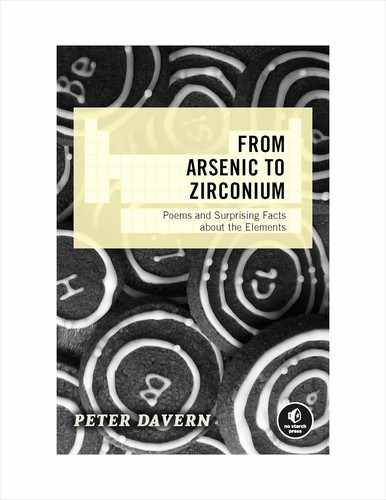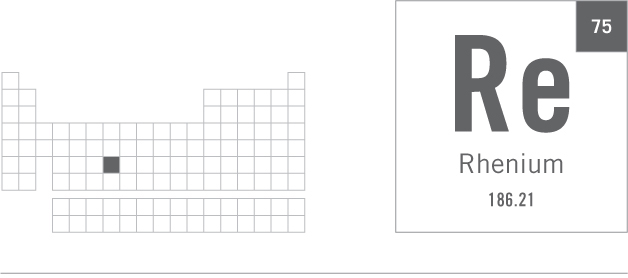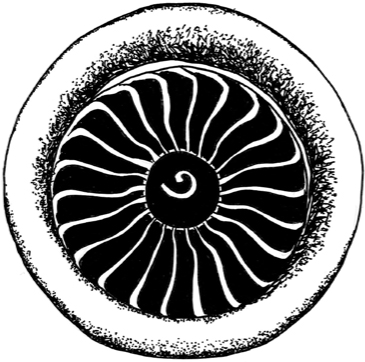RHENIUM, Re
DENTS DIAMOND’S PRIDE
“Discovered last (though seen before!), I’m über-dense ’n’ -rare,
GROUP 7 TRANSITION METAL
Rhenium—the very rare14 and very dense15 row 6 transition metal—was the last of the stable, naturally occurring, non-radioactive elements to be discovered. In 1925, German scientists Walter Noddack (1893–1960) and Ida Tacke (1896–1978) isolated the element, and Otto Berg (1873–1939) conducted the analysis confirming their discovery.
Interestingly, in 1905, the Japanese chemist Masataka Ogawa (1865–1930) detected what he believed was element 43. This element sits directly below manganese (and directly above rhenium) on the periodic table and is now known as technetium. Unfortunately, despite naming his discovery nipponium (after Nippon, the Japanese word for Japan) and assigning it the symbol Np, his identification couldn’t be confirmed and his claim was eventually discredited. But it now appears Ogawa may have unknowingly stumbled upon rhenium! Strong evidence for this claim was reported in 2004 by H.K. Yoshihara of the Japan Data Isotope Institute. Yoshihara examined a photographic plate of the original X-ray spectrum for Ogawa’s nipponium sample and stated, “The spectrum was read and indicated the absence of the element 43 and the presence of the element 75 (rhenium).”16
arr-ee
I’ve loads of oxidation states!” hear proud Re declare.
Rhenium has one of the largest ranges of oxidation states of any element, namely –1, 0, +1, +2, +3, +4, +5, +6, and +7; the last of these is its most common.
“My hard diboride’s rarely matched,
Dents diamond’s pride and leaves it scratched!
Diamond’s longstanding reputation as one of the hardest substances in the world has taken a hit in recent times with the synthesis of super-hard rhenium diboride (ReB2). ReB2 is so hard that it can scratch diamond’s surface.
I help those single-crystal blades keep planes up in the air!”
More than 70 percent (around 40 metric tons) of the rhenium metal produced each year ends up as a minor (only about 6 percent), yet essential, constituent in the predominantly nickel-based superalloys used in blades for airplane jet engines and turbines. These blades are ingeniously grown as single crystals (solid crystalline materials in which an orderly three-dimensional arrangement of the atoms, ions, or molecules is repeated throughout their entire volume), thus improving their strength. Without rhenium’s help, the blades would buckle and wilt when exposed to the searing combustion temperatures (around 1,600°C) inside these engines as they roar through the sky.


